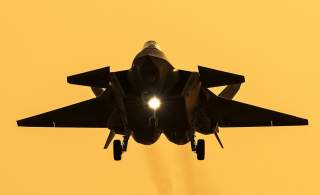We Don't Know How Many Bullets, Guns or Planes China Sells Around the World
China may be the world’s No. 2 arms producer, according to a new estimate. But we still don't know how many arms it actually sells.
China may be the world’s No. 2 arms producer, according to a new estimate.
If true, this is bad news for Russia. During the Cold War, the United States and the Soviet Union accounted for the bulk of global arms production. The United States is still No. 1, but the evidence suggests that China has risen to second place.
The estimate comes from the Swedish-based Stockholm International Peace Research Institute (SIPRI), which publishes well-regarded estimates of global defense spending and arms sales. In December 2019, SIPRI published its list of the Top 100 defense companies, ranked by annual sales. While the top five were all American firms, the study omitted Chinese companies.
“In the past, a lack of transparency has meant that the value of Chinese companies’ arms sales has been either unknown or difficult to reliably estimate,” SIPRI said. “For this reason, the SIPRI Top 100—an annual ranking of the world’s 100 largest arms-producing and military services companies—has so far not been able to include Chinese arms companies.”
However, now SIPRI believes it has enough data on four large Chinese companies to draw conclusions about overall Chinese arms sales.
“Based on estimated arms sales in 2015–17, the four major Chinese arms companies chosen for the study can now finally be compared with the major arms companies from the rest of the world. In 2017, of the 20 largest companies in the SIPRI Top 100, 11 were based in the USA, 6 in Western Europe and 3 in Russia,” according to SIPRI. “If the four Chinese arms companies investigated in the study were included in the Top 100, they would all rank among the top 20, with combined estimated arms sales totaling $54.1 billion. Three of the companies would be ranked in the top 10.”
“The largest of the Chinese companies is Aviation Industry Corporation of China (AVIC), which with arms sales totaling $20.1 billion would rank sixth largest in the world. China North Industries Group Corporation (NORINCO), which would place eighth in the Top 100 with sales of $17.2 billion, is in fact the world’s largest producer of land systems.”
If four Chinese companies account for $54 billion in arms sales, that would be a substantial fraction of the $284 billion in sales by SIPRI’s list of the world’s Top 20 defense companies.
The U.S. State Department estimates the world has been spending almost $3 trillion per year on arms between 2007 and 2017. The United States accounted for 79 percent of the global arms trade, or an average of $143 billion per year, followed by the European Union at 10 percent and Russia at 5 percent. Curiously in light of the SIPRI figures, China accounted for less than 2 percent, according to the U.S. government.
SIPRI also noted that Chinese weapons makers tend to be much more specialized than their counterparts in other nations. “Contrary to most other major global arms producers, Chinese arms companies specialize primarily in one arms production sector, for example, AVIC produces mostly aircraft and avionics. Most of the large non-Chinese arms companies produce a wider range of military products across different sectors—covering aerospace, land systems and shipbuilding within one company.”
Nonetheless, any estimates of Chinese arms sales are probably on the low side, SIPRI warns. “These new estimates are most likely still an underestimate. A lack of transparency in the arms sales figures of Chinese arms companies continues to hinder a complete understanding of China’s arms industry. This new research, however, acts as an important scoping study that opens the possibility for further research and prepares the ground for a fuller estimate of Chinese arms sales.”
Michael Peck is a contributing writer for the National Interest. He can be found on Twitter, Facebook. or on his Web site.

